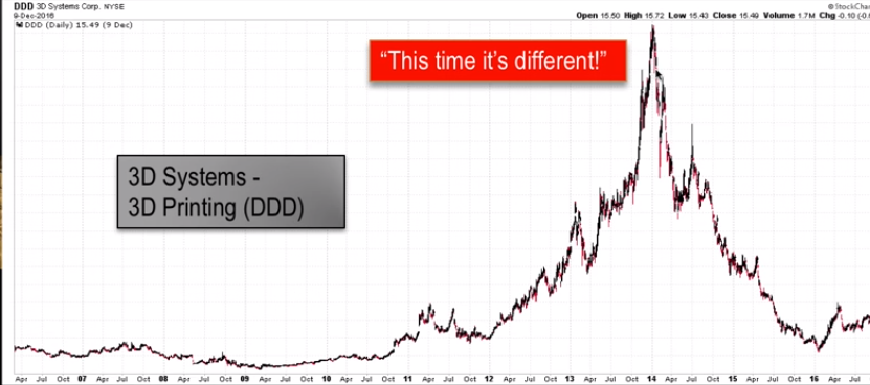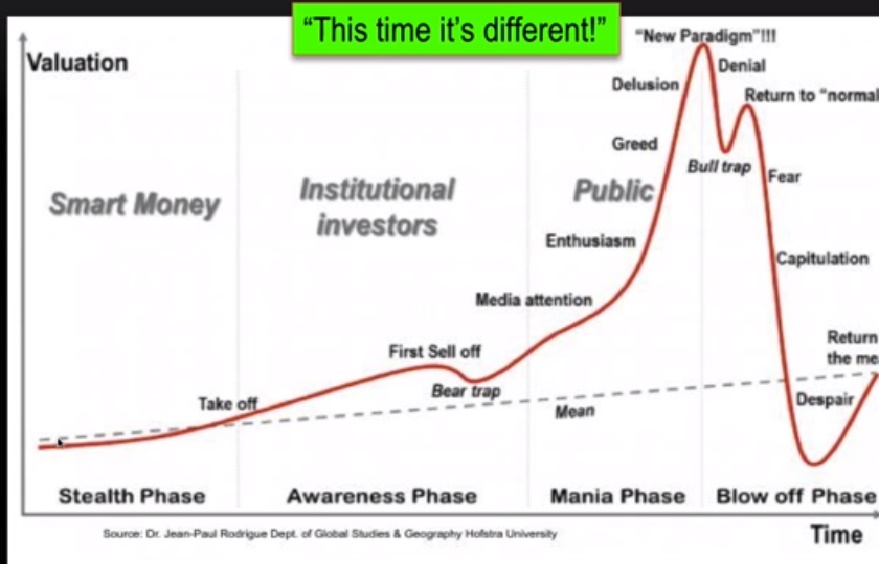bitcoin bubble this time is no different from technical perspective.
Bitcoin whipsawed investors, falling below $7,000 for the first time since November before recovering most of today’s losses, as a miserable 2018 continued for cryptocurrencies, with investors confronting a mounting list of concerns about the future of the industry.
Since reaching a record high of $19,511 on Dec. 18 shortly after the introduction of regulated futures contracts in the U.S., Bitcoin has wiped out more than half its value amid waves of negative news. Setbacks included escalating regulatory threats from authorities around the world including India, South Korea, China and the U.S., a record $500 million heist at Japanese exchange Coincheck Inc., fears of price manipulation and Facebook’s ban on cryptocurrency ads.
Japanese authorities raided Coincheck’s offices Friday morning, a week after the robbery, hauling out documents and computers as evidence. The inspection was conducted to ensure security for users, Finance Minister Taro Aso said.
“Bitcoin is in trouble,” Lukman Otunuga, a research analyst at foreign exchange broker Forextime Ltd, wrote in a note Friday. “Price action suggests that bears are clearly in control, with further losses on the cards as jitters over regulation erode investor appetite further.”
The largest digital currency dropped as much as 16 percent to $7,643, before trading at $8,897 at 11:14 a.m. in New York, according to consolidated Bloomberg pricing. Bitcoin is down 21 percent on the week. Rival coins Ripple, Ether and Litecoin tumbled at least 28 percent as losses continued to spread across cryptocurrencies.
Nouriel Roubini of Roubini Macro Associates said Bitcoin is the “mother of all bubbles,” and its bubble is now bursting, speaking in an interview on Bloomberg Television. He said “virtually every” Group of 20 country is talking about cracking down on the phenomenon as policymaker worries grow.

"they promises us to print even our food"

January 3, 2014, was a momentous day for the 3-D printing industry. The stocks of two of its leading companies, 3D Systems and Stratasys, peaked after nearly 30 years in business, and hopes were high for the technology. Most thought it would democratize manufacturing, allowing consumers to produce customizable goods from their homes. There’d be no point in retail stores anymore; customers would instead log onto the websites of their favorite brands, download personalized product files and print them within minutes. The price of goods would be slashed, international trade deficits reversed, ethically suspect supply chains rendered unnecessary and the environment spared untold amounts of degradation, both from the reduction in mass manufacturing and global shipping, as well as the recyclable nature of the 3-D printed products themselves. It was to be the next industrial revolution.But January 3, 2014, was also the start of a precipitous two-year decline that saw 3D Systems’s shares lose more than 92 percent of their value and Stratasys’s fall by over 86 percent. Expectations plummeted as well; 3-D printing turned from savior to gimmick. Industry analysts and researchers now agree that the hype far outpaced practical applications. Even the companies admit it, though they insist a revolution is still brewing.

